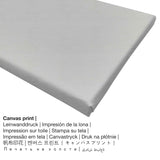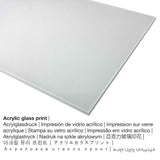Claude Monet, 1873 - Sunrise (Marine) - fine art print
Taxes incluses. Frais de port calculés au paiement.
Specification of the product
Sunrise (Marine) was by the male painter Claude Monet in 1873. The 140 year-old piece of art was painted with the dimensions 50,2 × 61 cm (19 3/4 × 24 in). Oil on canvas was used by the European artist as the medium of the piece of art. Nowadays, this artwork is included in the digital art collection of The J. Paul Getty Museum, which is part of the J. Paul Getty trust and is one of the world's largest arts organizations worldwide. It seeks to inspire curiosity about, and enjoyment and understanding of, the visual arts by collecting, conserving, exhibiting, and interpreting works of art of outstanding quality and historical importance.. We are pleased to state that this public domain work of art is included with courtesy of The J. Paul Getty Museum.: . In addition to that, the alignment of the digital reproduction is in landscape format and has a ratio of 1.2 : 1, meaning that the length is 20% longer than the width. The painter Claude Monet was an artist from France, whose art style can be attributed primarily to Impressionism. The Impressionist painter lived for a total of 86 years, born in 1840 in Paris, Ile-de-France, France and died in 1926 in Giverny, Normandie, France.
Pick your material
For every product we offer different materials and sizes. The following options are available for individualization:
- Poster print (canvas material): A poster is a UV printed canvas paper with a fine surface texture. It is suited for putting your art replica using a custom frame. Please note, that depending on the absolute size of the poster print we add a white margin 2 - 6cm around the artwork, which facilitates the framing with your custom frame.
- Acrylic glass print (with real glass coating): A glossy acrylic glass print, which is often labelled as a fine art print on plexiglass, will change your favorite original into stunning wall decoration. The real glass coating protects your custom art print against light and external influences for many years to come.
- The canvas print: The printed canvas, which should not be mistaken with an artwork painted on a canvas, is a digital replica printed on a cotton canvas material. It makes the extra impression of three dimensionality. How do I hang a canvas on my wall? The advantage of canvas prints is that they are relatively low in weight. This means, it is quite simple to hang your Canvas print without the support of any wall-mounts. Because of thatcanvas prints are suited for any kind of wall.
- Aluminium dibond print: Aluminium Dibond prints are prints on metal with an outstanding depth effect. The colors of the print are luminous and bright in the highest definition, the details appear very clear, and you can perceive a matte appearance of the fine art print.
Legal note: We try in order to describe the products with as many details as possible and to demonstrate them visually on the various product detail pages. At the same time, some pigments of the print products, as well as the printing can diverge marginally from the presentation on your monitor. Depending on the screen settings and the condition of the surface, not all color pigments are printed 100% realistically. Bearing in mind that all the fine art prints are processed and printed manually, there may as well be slight discrepancies in the motif's size and exact position.
Structured article information
| Product categorization: | wall art |
| Reproduction: | reproduction in digital format |
| Manufaturing technique: | UV direct printing |
| Manufacturing: | Germany |
| Type of stock: | on demand |
| Product usage: | wall decoration, wall picture |
| Image orientation: | landscape alignment |
| Aspect ratio: | 1.2 : 1 (length : width) |
| Aspect ratio meaning: | the length is 20% longer than the width |
| Available product materials: | metal print (aluminium dibond), poster print (canvas paper), canvas print, acrylic glass print (with real glass coating) |
| Canvas on stretcher frame (canvas print) size options: | 60x50cm - 24x20", 120x100cm - 47x39", 180x150cm - 71x59" |
| Acrylic glass print (with real glass coating) sizes: | 60x50cm - 24x20", 120x100cm - 47x39", 180x150cm - 71x59" |
| Poster print (canvas paper) sizes: | 60x50cm - 24x20", 120x100cm - 47x39" |
| Aluminium print sizes: | 60x50cm - 24x20", 120x100cm - 47x39" |
| Picture frame: | please consider that this art print has no frame |
Artwork table
| Title of the piece of art: | "Sunrise (Marine)" |
| Classification: | painting |
| General term: | modern art |
| Artwork century: | 19th century |
| Created in the year: | 1873 |
| Approximate age of artwork: | 140 years |
| Artwork original medium: | oil on canvas |
| Size of the original artpiece: | 50,2 × 61 cm (19 3/4 × 24 in) |
| Museum: | The J. Paul Getty Museum |
| Location of the museum: | Los Angeles, California, United States of America |
| Website of the museum: | The J. Paul Getty Museum |
| License of artwork: | public domain |
| Courtesy of: | The J. Paul Getty Museum |
About the painter
| Name: | Claude Monet |
| Alternative names: | Monet, Mone Klod, Monet Claude, מונה קלוד, Claude Monet, C. Monet, Monet Oscar-Claude, Monet Oscar Claude, Claude Oscar Monet, Monet Claude Jean, monet claude, Monet Claude Oscar, monet c., Cl. Monet, Monet Claude-Oscar |
| Gender: | male |
| Nationality: | French |
| Professions of the artist: | painter |
| Country: | France |
| Artist classification: | modern artist |
| Styles: | Impressionism |
| Lifespan: | 86 years |
| Born in the year: | 1840 |
| Town of birth: | Paris, Ile-de-France, France |
| Year died: | 1926 |
| Town of death: | Giverny, Normandie, France |
Copyright © | Artprinta.com (Artprinta)
What specifically does the website of the The J. Paul Getty Museum state about the 19th century artwork from the painter Claude Monet? (© Copyright - by The J. Paul Getty Museum - The J. Paul Getty Museum)
In the muted palette of the emerging dawn, Claude Monet portrayed the industrial port of Le Havre on the northern coast of France. The brilliant orange of the rising sun glimmers amid the damp air and dances on the gentle rippling water, lighting up its iridescent blues and greens. Barely discernible through a cool haze, pack boats on the left billow smoke from their stacks. Painted during the spring of 1873 as the country struggled to rebuild following the Franco-Prussian war, this Sunrise might also metaphorically suggest a new day dawning in France.
Sunrise exemplifies Monet's plein air, or "outdoor," approach to painting. The informal and spontaneous brushstrokes establish this picture as one of the first works, along with the famous Impression: Sunrise at the Marmottan Museum in Paris, in the Impressionist style that was to make him famous. The ephemeral play of light, water, and air would remain Monet's subject for the rest of his career.














